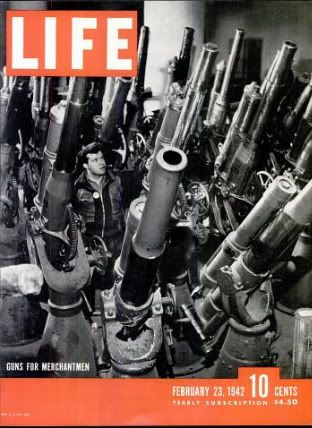
Every gun we got presented problems of some kind. All those in the semi-automatic class had different recoil actions. For each a minimum time had to elapse after firing before the gun would settle back to its original position so it could be fired again with some accuracy. If insufficient time was allowed, each successive shot would hit higher than the previous one. One had to aim low and fire in short bursts, otherwise, most of the bullets would go high and be wasted. Low shots at least had a chance to richochet into the target. For me, the worst such weapon was the Browning automatic rifle (BAR). When it worked properly, it was a devastating gun; but it was heavy, had large bulky clips, and jammed easily. I tried firing it in a sling and from the hip, but I could never control it. I practiced by shooting at tree roots. Invariably, within a few seconds I was shooting out the treetops.I liked the semi-automatic M-1 Garand 30.06 better, though it was also heavy and jammed easily if its ammunition clips were dented or dirty. Its sights were also sensitive and could be knocked awry merely by passing through brush. One had to spend a lot of time cleaning and sighting a Garand, but if it was properly kept up it was a fine weapon. Though less accurate than a Springfield, it spat out bullets in a stream.
My sentimental favorite was the Springfield .03. It was an older (World War I) rifle than the Garand but by far the most reliable gun we had. It was bolt action, carried five shells individually inserted plus one in the chamber, and had open iron sights that were not easily jimmied. You could drop it in a river and expect it to fire faithfully when it was fished out. Lighter than a Garand, it was easier to carry save in dense brush. Not the least, it had a good feel in one's hand, like a certain cue does to a pool player or a favorite old glove to a baseball player. Under primitive conditions a simple, durable weapon is often the most practical.
We got a few tommyguns: heavy, clumsy, short barrelled .45 caliber blasters that fired either twenty-shot clips or fifty-round drums of bullets, though they were most effective when fired in bursts of five shots. The FBI made tommyguns famous. I used mine to hunt wild pigs.
"Ten thousand Jews are deported from the Lódz (Poland) Ghetto to the Chelmno extermination camp, where they are gassed."